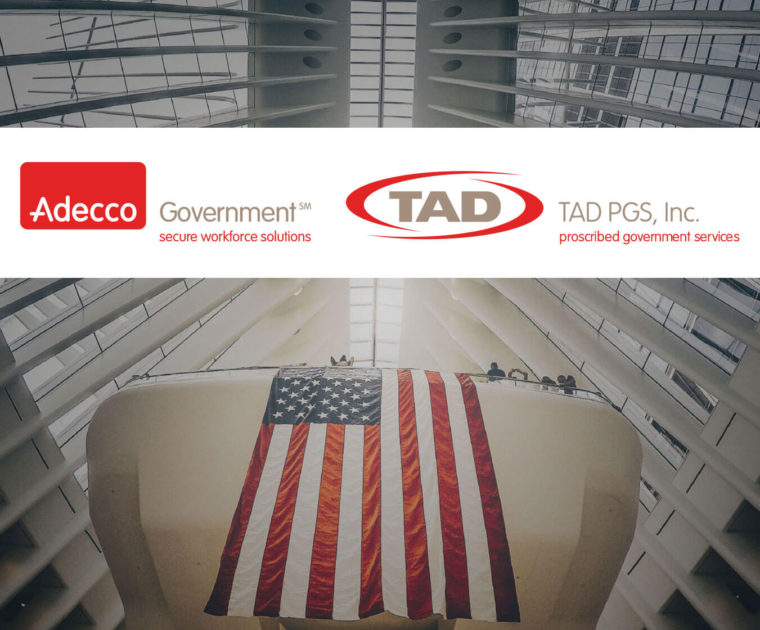George Peterson, of Project Dimensions has this to say about the raise of CA’s minimum wage:
As a small business owner in California, 23 employees as of 4/4/16, I certainly have an opinion on this.
There are approximately 2.2 million minimum wage workers out of approximately 18 million workers in California. This number includes minimum wage jobs that earn tips, commissions, under the table pay and others. That means the true number of minimum wage workers is lower, probably significantly lower considering there are 1.4 million restaurant workers.
https://www.restaurant.or
The current minimum wage in California is $10/hr. Under this new legislation, the increases are:
2017: $10.50/hr
2018: $11/hr
2019: $12/hr
2020: $13/hr
2021: $14/hr
2022: $15/hr
Beyond 2022: Minimum wage will continue to increase each year at the rate of inflation.
UNIONS:
Several unions in California have been trying to get labor backed ballot initiatives on the ballot for years. Many believe they would have been successful this year. Their initiatives called for everything from an immediate $15/hr minimum wage, or higher, to additional vacation time, sick time, family leave time and other things. California almost had no choice but to negotiate and make this change to eliminate the possibility that the unions would be able to pass an initiative that would have placed a heavy burden on business with virtually no ability by the government to regulate it.
THE EMPLOYEE:
I’m sure every true minimum wage employee wants to earn $15/hr. But, there is so much to consider. In a full time work year, there are 2,080 hrs. A $10/hr employee would therefore make $20,800/yr working full time. Most employees at this level or below, are eligible for some government subsidies. Those subsidies increase if they are a single parent, disabled and if they meet other conditions. For many, the subsidies include housing.
You MUST consider the tax consequences of making more money before you can determine if the increase is good or bad for the employee.
I used the TurboTax calculator to determine the below numbers:
https://smartasset.com/ta
At $10/hr, full time, single, living in Los Angeles, here are the taxes:
Income: $20,800 annual
Federal @ 15% marginal rate = $1,114
FICA @7.65% marginal rate = $1,591
State @ 2.00% marginal rate = $257
Local 0.00% Margianl rate = $0
Total tax = $2,962
Effective tax rate = $14.2%
Total take home = $17,838
At $15/hr, fulltime, single, living in Los Angeles, here is are the taxes in dollars:
Income: $31,200 annual
Federal @ 15% marginal rate = $2,674
FICA @7.65% marginal rate = $2,387
State @ 4.00% marginal rate = $636
Local 0.00% Margianl rate = $0
Total tax = $5,697
Effective tax rate = $18.25%
Total take home = $25,503
For the additional $10,400 in annual income, the additional tax is $2,735, for a net gain of $7,665 ($638.75/month).
The unknown is the value of any subsidies that will be lost because the individual moves into a different state tax bracket; CA 2% to CA 4%. It could be significant if it is an issue of housing. In fact, the loss of the subsidy could be more than the net gain by the increased wage. But, this is unknown.
THE EMPLOYER:
Most people are unaware that the employer matches, roughly, the tax liability of the employee. The following is my actual payroll chart of accounts, right out of my accounting system:
That’s 18.95% on top of the employee’s wage. Worker’s comp for me is $5.05/$100 of wage paid. That’s an additional 5.05% on top of the 18.25% for a total cost of 24% of the employee’s wage.
A $10/hr employee costs the business $12.40
A $150,000 payroll increases to $186,000 after taxes and worker’s comp.
A $15%/hr employee costs the business $18.60
The payroll is now $225,000, $279,000 after taxes and worker’s comp (assuming no decrease in the number of employees).
That should make sense because it’s a 50% increase in payroll from $10/hr to $15/hr
A small business with gross sales of $1,000,000/yr, with a taxable income of 15%, would have a $150,000 profit before taxes. For a brick and mortar small business to make 15%, that’s actually pretty good. Better than the vast majority of small businesses. And, BTW, a $1,000,000/yr small business is rare. Most are at the $250,000/yr level.
A business owner, single, living in Los Angeles, will pay taxes of $51,429 (a 34.2% effective tax rate) on the taxable income of $150,000. The owner’s take home pay would be $98,571. Of course, this isn’t what the owner takes home because some money needs to be left in the business, some needs to be reinvested in the business, but, for now, let’s say that is the amount taken home.
Let’s make the assumption the business owner has all minimum wage employees and the payroll on this business is $150,000. As noted above, an increase from $10/hr to $15/hr will increase the payroll to $225,000, $279.000 after taxes and worker’s comp. If the business owner’s after tax income is $98,571, with the wage increase the owner’s take home is reduced to $5,571.
Let’s get back to the issue of leaving money in the business. An annual payroll of $150,000, $186,000 after taxes and workers comp is $15,500/month. An annual payroll of $225,000, $279,000 after taxes and worker’s comp is $23,250/month. The owner must be able to cover that payroll if there is inadequate cash flow. The owner needs to leave a minimum of 25% of his taxable income in the business (this is a VERY reasonable number). Investment in the business is also important; updating furniture, fixtures and equipment is mandatory or the business will no longer be able to compete in the market. Let’s say this is also included in that 25%.
How can the owner invest in the business if the take home is only $5,571?
The one huge glaring item that’s missing from this; the loan payment on the business. The principle of the loan payment is not tax deductible. The remaining principle amount left on the loan sits on the balance sheet and is not included when filing taxes. Only the interest is included.
If the owner has an SBA loan of $150,000, amortized over 7 years at 4.5%, the monthly loan payments are $2,085.02. For simplicity, let’s say half of that is principle; $1,042.51. That’s annual principle payments of $12,510.12.
After the reduced take home of the owner to $5,571, subtracting the annual loan payments of $12,510.12, the owner’s real cash flow take home is now -$6,939.12.
CONCLUSION:
A business owner, who owns a million dollar business, will have the liability of lawsuits, the labor board, EDD, Franchise Tax board, banks, the IRS, and others.
It is no longer worth the liability to take home -$6,939.12 after taxes when the owner can go get a minimum wage job making $25,503 full time after taxes with no liability. In fact, a second job working an additional 10 hrs a week, would add an additional $7,800/annually before taxes.
So, minimum wage, working 50/hr a week, having 2 jobs:
Income: $39,000 annual
Federal @ 15% marginal rate = $3,844
FICA @7.65% marginal rate = $2,984
State @ 4.00% marginal rate = $1,059
Local 0.00% Margianl rate = $0
Total tax = $7,887
Effective tax rate = $20.22%
Total take home = $31,113
MY OPINION:
In our scenario (which is very real):
Business owner: -$6,939.13 after taxes.
Minimum wage employee working 50hrs/wk: $31,113 after taxes
It’s no longer worth owning a business. Simple as that.
And the employees? They will all have to find another job.
THE REALITY:
This is actually a big experiment. If you ask 10 economists what they think is going to happen, you will get 10 different answers.
As a business owner, I can tell you with absolutely certainty, I will get back to that $150,000 payroll number so I can stay in business. Employees are going to be laid off, hours will be cut, prices will increase and hours might be reduced. Landlords might be asked to reduce rent, the business might reduce the size the footprint (sqft of the business), or move to a smaller, less expensive space.
The government are the real winners in this. Everyone else loses. They are collecting more tax revenue while creating more problems for the very people they are trying to help. This is all done on the backs of the small business owner, who in essence is working for slightly above minimum wage while shouldering the burden of all the liability.
A MUCH BETTER SOLUTION:
Raise the minimum wage to $15/hr. However, only tax the worker on $5/hr. For the worker making $31,200 working full time at $15/hr, the total tax would be $870. I would keep this $5/hr tax in place until until $22/hr ($45,760/annually)
EMPLOYEE – for a comparison:
-$10/hr, full time = $20,800, taxes of $2,784 = $18,016 take home.
-$15/hr, full time = $31,200, taxes of $5,697 = $25,503 take home.
-$15/hr full time = $31,200, taxes on $5/hr, $870 = $30,330 take home.
BUSINESS – for comparison:
I would propose exactly the same, only tax $5/hr up to $22/hr. This would lower payroll taxes of our scenario above, on the $150,000/yr payroll, from $36,000/yr to $18,000/yr, all while INCREASING the pay of the employee.
I would also propose a tax credit for reinvestment in furniture, fixtures and equipment of the business. This would give the business owner an incentive to make the workplace more productive and safer for the employees. Because the payroll tax is 24%, I think 24% of all reinvestment as a tax credit would be great.
-$150,000/annual payroll with all $10/hr employees = $186,000 total payroll costs after taxes and workers comp
-$225,000/annual payroll with all $15/hr employees = $243,000 total payroll costs after taxes and workers comp
-$225,000/annual payroll, $15/hr employees, tax on only $5/hr and $50,000 reinvestment with a 24% tax credit = $231,000 total payroll costs after taxes and workers comp and reinvestment tax credit.
That’s still a $45,000 increase in payroll, 24%, and that definitely stings if you’re a business owner.
FINAL SUMMARY
Small business are already taxed to death. They pay federal, state, county, city, Franchise Tax board, business licensing fees, dues, subscriptions…it’s really outrageous.
By raising the wage, small business will be paying more. There’s no way around it. I fully suspect most small businesses will react by cutting expense.
I predict in 7 years, the workers and the businesses will be equally as upset as they are now and we will be having this same discussion again.



